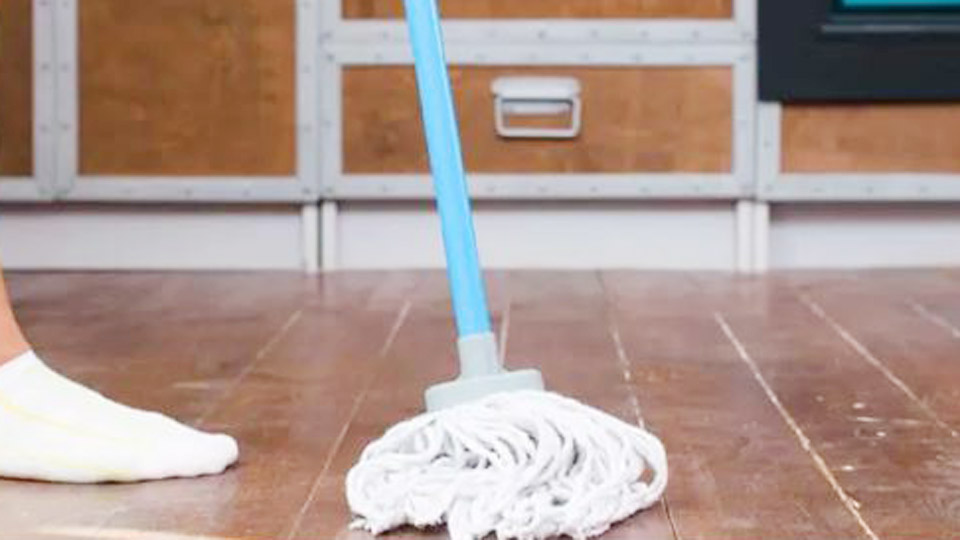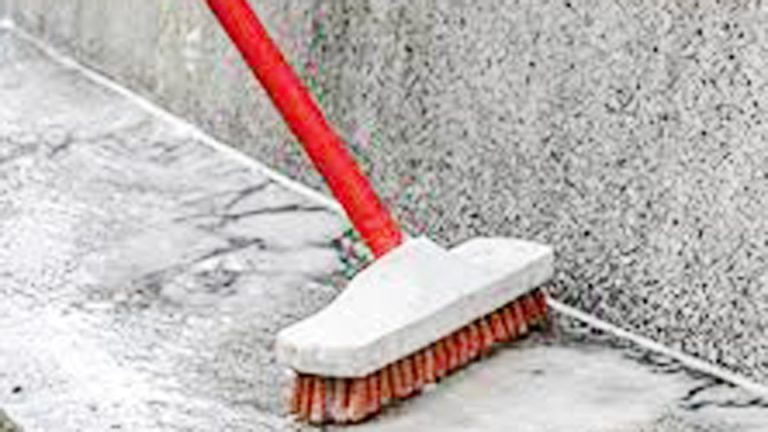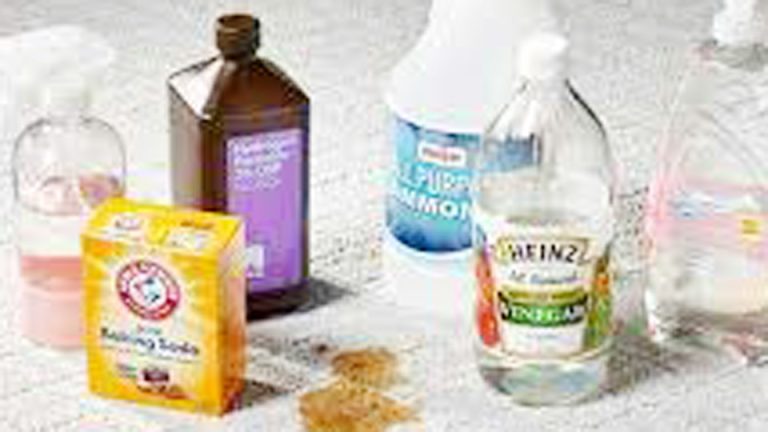I know the frustration of trying to maintain the shine on laminate floors. Between muddy paw prints, spilled coffee, and everyday dust, those floors can lose their luster fast. That’s why I swear by my homemade laminate floor cleaner with vinegar—it’s affordable, eco-friendly, and works like a charm. I discovered this magic solution when I was desperate to clean my kitchen laminate after a holiday party left it sticky and dull.
I’ll share my go-to recipes, step-by-step cleaning methods, and personal tips from years of trial and error to help you keep your laminate floors gleaming. If you’re a busy mom or a working professional, this approach is simple and effective.

Image by flooringsurgeons
Why Vinegar Is Perfect for Laminate Floors
I fell in love with vinegar as a cleaning tool when I realized how versatile and budget-friendly it is. Its acetic acid cuts through grease, lifts dirt, and leaves laminate floors streak-free when used correctly. Unlike harsh commercial cleaners, vinegar is natural, safe for homes with kids and pets, and costs just pennies per use.
I’ve used it to tackle everything from juice spills to pet accidents on my laminate floors, and it never fails to impress. However, laminate floors are sensitive to excess moisture, so you need to use vinegar carefully to avoid damage. Let’s explore how to make and use a homemade laminate floor cleaner with vinegar that keeps your floors sparkling without the risk.
Laminate Floors
Before we get into the recipes, let’s talk about laminate floors. I’ve cleaned laminate in my kitchen, living room, and hallways, and I’ve learned they require special care. Laminate is made of layered materials with a protective top coat, which makes it durable but sensitive to water and harsh chemicals.
Too much moisture can seep into the seams, causing warping or swelling—I learned this after over-mopping my dining room floor early on. Vinegar is safe for laminate when diluted properly, but you’ll want to avoid soaking the floor.
Always check your floor’s care instructions or test a small, hidden area first to ensure your cleaner won’t harm the finish. Knowing your floor’s needs sets you up for success.
Gathering Your Ingredients and Tools
To make a homemade laminate floor cleaner with vinegar, you’ll need a few simple items. I keep these in a cleaning caddy for quick access when my floors need a refresh. Here’s what I use:
- White vinegar: Clear, distilled vinegar is best for cleaning—avoid apple cider vinegar, as it can leave a sticky residue.
- Cold water: For diluting vinegar and rinsing.
- Liquid dish soap: Optional for extra grease-cutting power.
- Essential oils (optional): Lemon or lavender add a fresh scent.
- Spray bottle: For applying cleaner evenly.
- Microfiber mop or cloth: Prevents streaks and lint on laminate.
- Bucket: For mixing larger batches of cleaner.
- Dry microfiber towel: To buff floors and prevent watermarks.
- Soft sponge: For spot-cleaning tough stains.
These items are affordable and likely already in your home, making this a budget-friendly cleaning solution.
Recipe 1: Basic Vinegar Laminate Floor Cleaner
This is my go-to cleaner for everyday maintenance. It’s simple, effective, and leaves my floors sparkling without streaks. Here’s how I make it:
Ingredients
- ½ cup white vinegar
- 1 gallon warm water
- 5-10 drops lemon essential oil (optional)
Instructions
In a bucket, mix the vinegar and warm water. I use warm water here because it helps dissolve dirt without setting stains, but it’s not hot enough to damage laminate. Add the essential oil for a fresh scent—I love lemon for its clean, uplifting vibe. Stir gently to combine. If you’re cleaning a small area, halve the recipe and use a spray bottle.
How to Use
Dip a microfiber mop into the solution, then wring it out thoroughly—laminate floors hate excess water. Mop in the direction of the floor’s grain to avoid streaks. I work in small sections, about 3×3 feet, to keep things manageable.
For stubborn spots, like dried juice, I spritz the solution directly onto the stain, let it sit for a minute, then wipe with a microfiber cloth. Dry the floor with a microfiber towel to prevent watermarks. I once skipped drying and ended up with streaks—never again!
Tips for Success
Use minimal liquid to avoid seepage into seams. I wring my mop until it’s just damp. This cleaner is great for daily or weekly cleaning to keep dust and light dirt at bay.
Recipe 2: Grease-Cutting Vinegar and Dish Soap Cleaner
For kitchens where grease builds up, this cleaner is a lifesaver. I used it after a frying session left my floor sticky and dull. Here’s the recipe:
Ingredients
- ¼ cup white vinegar
- 1 gallon warm water
- 1 teaspoon liquid dish soap
- 5 drops tea tree essential oil (optional)
Instructions
In a bucket, combine the vinegar, warm water, and dish soap. Add the essential oil for a fresh scent—tea tree also has antibacterial properties, which I love for kitchen floors. Stir gently to mix. For small areas, use a spray bottle with ¼ cup vinegar, 2 cups water, and a drop of dish soap.
How to Use
Dip your microfiber mop into the solution and wring it out well. Mop in the direction of the floor’s grain, focusing on greasy areas near the stove or sink. I once tackled bacon grease splatters with this, and the floor was spotless in minutes.
For tough spots, spritz the solution directly, let it sit for 2-3 minutes, then wipe with a microfiber cloth. Rinse the mop frequently to avoid spreading grease. Dry the floor with a microfiber towel to prevent streaks or water damage.
Tips for Success
The dish soap boosts grease-cutting power, but too much can leave a residue, so I stick to a small amount. This cleaner is perfect for weekly deep cleans in high-traffic kitchens.
Recipe 3: Spot-Cleaning Paste for Stubborn Stains
For dried-on stains like pet accidents or food spills, I make a vinegar and baking soda paste. It’s gentle yet effective. Here’s how:
Ingredients
- 2 tablespoons baking soda
- 1 tablespoon white vinegar
- 1-2 teaspoons water (to form a paste)
Instructions
In a small bowl, mix the baking soda with just enough vinegar and water to form a thick paste. I adjust the water to get a spreadable consistency. The vinegar makes it fizz, which helps lift stains.
How to Use
Apply the paste to the stain with a soft sponge or cloth. I used this on a dried coffee spill under my dining table, and it worked like magic. Gently rub in circular motions, then let it sit for 5 minutes. Wipe clean with a damp microfiber cloth, then rinse the area with a cloth dipped in plain water.
Dry thoroughly with a microfiber towel to prevent moisture damage. This paste is a lifesaver for tough stains but shouldn’t be used too often, as baking soda is abrasive.
Tips for Success
Use this sparingly on laminate to avoid scratching the finish. I always test a small area first and rinse thoroughly to remove all residue.
Cleaning Laminate Floors Safely
Laminate floors are beautiful but finicky, so I follow a few rules to keep them in top shape:
Avoid Over-Wetting
Too much water can seep into seams and cause warping. I wring my mop until it’s barely damp and dry the floor immediately after cleaning.
Use Microfiber
Microfiber mops and cloths are gentle and prevent streaks. I avoid regular mops, as they can leave too much water behind.
Test First
I always test my cleaner on a hidden area, like under furniture, to ensure it won’t dull the finish. This saved me once when a too-strong solution left a cloudy spot.
Clean Regularly
I clean my laminate floors weekly to prevent dirt buildup. Dust and grime can act like sandpaper, dulling the finish over time.
Comparing Homemade Laminate Floor Cleaners
I’ve tried various homemade cleaners, and each has its place. Here’s a table comparing my favorites:
| Cleaner | Ingredients | Pros | Cons | Best For |
|---|---|---|---|---|
| Basic Vinegar Cleaner | Vinegar, water, essential oil | Simple, streak-free, safe for daily use | Not strong enough for grease or stains | Daily or weekly cleaning |
| Grease-Cutting Cleaner | Vinegar, water, dish soap, essential oil | Cuts grease, great for kitchens | Can leave residue if overused, needs rinsing | Greasy kitchen floors |
| Spot-Cleaning Paste | Baking soda, vinegar, water | Lifts tough stains, odor-neutralizing | Abrasive, not for frequent use, needs careful rinsing | Stubborn stains, spot cleaning |
| Water-Only Mopping | Warm water | Gentle, safe for all laminate floors | Less effective on grease or stains | Light dust or dirt |
The basic vinegar cleaner is my everyday go-to, while the grease-cutting cleaner is perfect for kitchens. The paste is reserved for tough stains.
Laminate Floor Cleaning Tips by Room
Different rooms have different needs. Here’s how I adjust my approach:
Kitchen
Kitchens get greasy, so I use the grease-cutting cleaner weekly. I focus on areas near the stove and sink, drying thoroughly to prevent water damage.
Living Room
Living rooms collect dust and pet hair, so the basic vinegar cleaner works well for weekly maintenance. I vacuum first to remove debris.
Hallways
High-traffic hallways need frequent cleaning. I use the basic cleaner and mop lightly to avoid over-wetting.
Bathrooms
Bathrooms are humid, so I dry floors immediately after cleaning with the basic cleaner. I avoid the paste here, as moisture can linger.
Preventing Damage and Keeping Floors Clean
Keeping laminate floors clean is easier with some preventative habits. Here’s what I do:
Vacuum or Sweep Regularly
I vacuum or sweep weekly to remove dust and grit that can scratch laminate. A vacuum with a hard-floor setting is my go-to.
Use Mats in High-Traffic Areas
I place washable mats near entrances and sinks to catch dirt and spills. My kitchen mat has saved my floor from countless coffee drips.
Clean Spills Immediately
I tackle spills right away with a damp microfiber cloth to prevent staining. My basic vinegar spray is always ready for quick cleanups.
Apply a Protective Sealant
Some laminate floors benefit from a sealant every few years. I check my floor’s care guide and reapply as needed to maintain the finish.
Extra Cleaning Hacks I Love
Here are some tricks I’ve picked up to make laminate floor cleaning easier:
Vinegar-Soaked Cloth for Stains: For tough stains, I soak a cloth in the basic vinegar cleaner, lay it on the spot for 5 minutes, then wipe clean.
Microfiber Dusting: I use a dry microfiber mop weekly to grab dust before it settles, reducing the need for deep cleaning.
DIY Shine Booster: Add a few drops of olive oil to the basic cleaner for extra shine on dull floors—just a tiny amount to avoid slipperiness.
You’re Ready to Make Your Floors Shine!
Learning homemade laminate floor cleaner with vinegar is like unlocking a secret to a beautiful home. These recipes have saved my floors from countless messes, from pet accidents to sticky spills, and they’re so easy to make.
With my step-by-step guide, you can clean your laminate floors with confidence and keep them gleaming, even during the busiest weeks. Your home deserves to sparkle, and you’ve got the tools and know-how to make it happen.
Frequently Asked Questions
Can I use apple cider vinegar instead of white vinegar for laminate floors?
I stick to white vinegar because apple cider vinegar can leave a sticky residue and isn’t as effective. White vinegar keeps laminate streak-free.
Will vinegar damage my laminate floors?
When diluted properly, like in my recipes, vinegar is safe for laminate. I avoid over-wetting and always dry thoroughly to prevent seepage.
How often should I clean my laminate floors with vinegar?
I clean weekly with the basic vinegar cleaner to keep dust and dirt at bay. For greasy kitchens, I use the grease-cutting cleaner every 1-2 weeks.
What if my floors look streaky after cleaning?
Streaks usually mean too much cleaner or water. I rinse with a damp cloth and dry with a microfiber towel to restore the shine.
Are these cleaners safe for homes with pets?
Yes, my vinegar-based cleaners are pet-safe and non-toxic. I just ensure the floor is dry before letting my pets walk on it to avoid tracking dirt.


